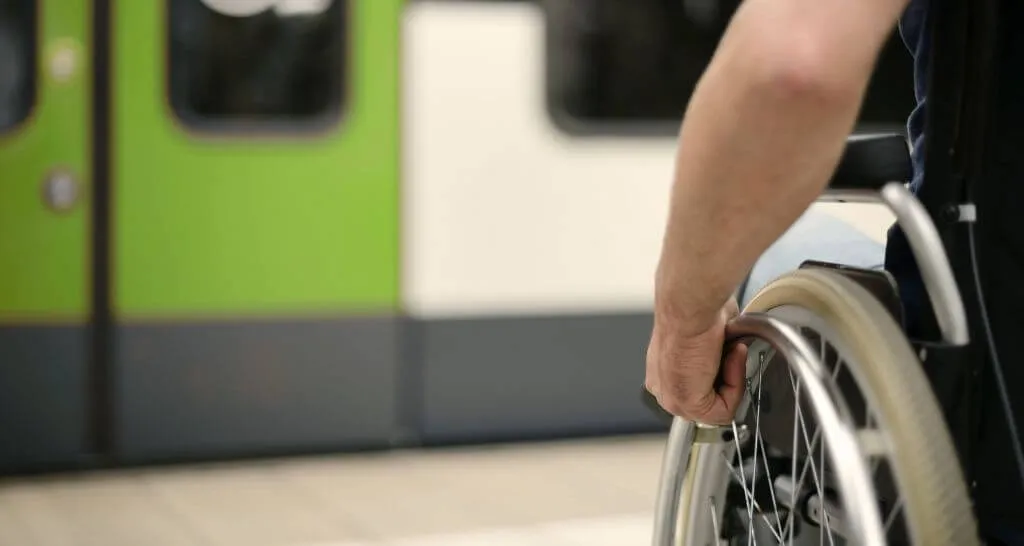Accessibility in transportation has been a long-standing challenge for individuals with mobility impairments, often limiting their ability to travel independently and fully engage in society. However, moving ramps are rapidly changing this landscape by providing solutions that make transportation more inclusive for people of all abilities.
From public transit systems to private vehicles and airports, ramps enhance accessibility, ensuring that individuals with disabilities can move freely and safely. They empower people with mobility challenges to travel with greater independence, fostering a sense of dignity and inclusion. As Aluminum Ramps become increasingly integrated into transportation infrastructure, we are witnessing a transformation in how we approach and design accessibility.
In this blog, we will explore the significant impact of moving ramps on transportation, highlighting their role in making transportation more accessible, efficient, and safe for everyone.
What Are Moving Ramps?
Moving ramps are adjustable platforms or inclined surfaces designed to facilitate the smooth and safe movement of people, equipment, or goods between different levels. They are commonly used in transportation systems such as buses, trains, airports, and private vehicles to provide accessible entry and exit for individuals with mobility challenges.
These ramps can be deployed manually or automatically, ensuring easy access for wheelchair users, strollers, and others with mobility devices. Fiberglass Ramps helps eliminate physical barriers, promoting inclusivity and independence by allowing individuals with disabilities to travel and navigate public spaces more efficiently.
How Moving Ramps Are Revolutionizing Transportation
- Empowering Independence for People with Disabilities
Moving ramps are playing a crucial role in transforming transportation by promoting independence for individuals with disabilities. These innovative ramps create a smooth transition for wheelchair users and those with mobility challenges, enabling them to access various modes of transportation quickly and easily.
By incorporating moving ramps into vehicles and public transport systems, individuals with disabilities can navigate their journeys independently and efficiently. This technological advancement not only enhances accessibility but also fosters inclusivity within the transportation sector, ultimately contributing to a more equitable society for all.
- Creating Safer Environments
The introduction of moving ramps in transportation has significantly improved safety for commuters. These systems ensure seamless transitions between different modes of transportation, such as buses, trains, and airplanes, minimizing the risks associated with traditional boarding and disembarking procedures.
By eliminating gaps and providing stable platforms for movement, moving ramps enhance accessibility for individuals with mobility challenges and help prevent accidents or injuries during embarkation and disembarkation. Prioritizing safety in transportation is essential, and the development of moving ramps represents a significant advancement toward achieving this goal in modern transit systems.
- Enhancing Convenience for Businesses
Moving ramps are playing a crucial role in transforming transportation by improving convenience for businesses. These innovative solutions simplify the loading and unloading processes, making logistics operations smoother and more efficient.
As a result, businesses experience increased productivity and reduced downtime since moving ramps provide a seamless transition for goods between trucks and warehouses. With features such as adjustable heights, easy maneuverability, and sturdy construction, moving ramps have become essential tools for optimizing transportation operations and meeting the demands of modern supply chains.
- Bridging the Gap in Public Transportation
One key way moving ramps are transforming transportation is by bridging gaps. They connect vehicles with platforms, offering greater accessibility for individuals with mobility challenges, such as wheelchair users or those with strollers.
Implementing moving ramps enhances the overall inclusivity of public transportation systems and improves the efficiency of boarding and disembarking processes. As cities work to create more inclusive and sustainable transportation networks, the integration of moving ramps represents a significant step toward ensuring equal access for all members of society.
- Making Travel More Accessible for Parents and Caregivers
Moving ramps are revolutionizing transportation by making travel more accessible for parents and caregivers. These innovative ramps provide a seamless transition for individuals using strollers, wheelchairs, or other mobility devices, ensuring a smooth and safe journey for all passengers.
By incorporating moving ramps into transportation systems, such as buses and trains, parents and caregivers can navigate various modes of transport quickly and efficiently. This advancement in transportation infrastructure enhances the overall travel experience and promotes inclusivity and accessibility for everyone.
- Boosting Community Engagement
Moving ramps are revolutionizing transportation by boosting community engagement. These innovative structures provide efficient access for pedestrians and cyclists and serve as gathering points in urban areas. By facilitating a seamless transition between different modes of transportation, moving ramps encourage active lifestyles and promote sustainable commuting practices.
Furthermore, these ramps can improve the overall connectivity of a city, fostering a sense of community among residents. As more cities embrace the concept of moving ramps, we can expect a positive shift towards more inclusive and accessible urban environments that prioritize convenience and community engagement.
- Improving Emergency Responses
Moving ramps are proving to be a game changer in transportation, particularly by enhancing emergency response capabilities. These innovative ramps provide swift and efficient access for emergency vehicles, allowing them to navigate through traffic seamlessly during critical situations.
By reducing response times, moving ramps play a crucial role in improving the overall effectiveness of emergency services, ensuring timely assistance to those in need. This advancement in transportation technology transforms how emergency responders address urgent situations, highlighting the importance of seamless mobility in saving lives.
- Promoting Sustainability in Transportation
The introduction of moving ramps in transportation systems plays a significant role in promoting sustainability within the industry. By offering a more energy-efficient and environmentally friendly alternative to traditional modes of transportation, these ramps help reduce carbon emissions and minimize the overall environmental impact of transportation networks.
The incorporation of moving ramps enhances the efficiency of transit systems and aligns with the global push for greener and more sustainable transportation solutions.
Conclusion
Moving ramps has been instrumental in transforming transportation by removing barriers and ensuring accessibility for everyone, including those with mobility challenges. These ramps have made public transportation systems, private vehicles, airports, and other spaces more inclusive for individuals with disabilities, promoting independence, safety, and dignity. As moving ramps evolve and become integrated into transportation infrastructure across the globe, they enhance the ease of travel and foster a more inclusive and equitable society.










